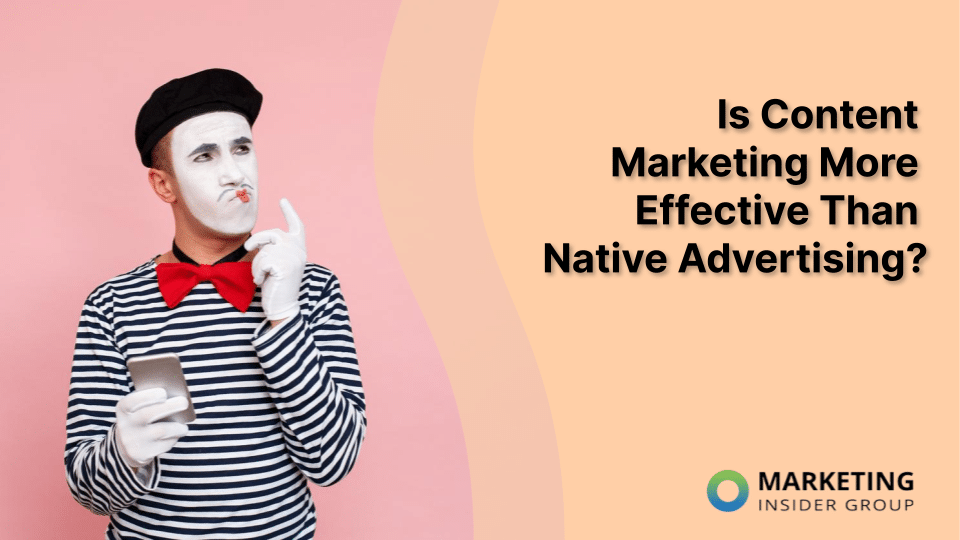
I often find myself talking with fellow marketers, agency representatives, and even editors of marketing publications. To my surprise, a lot of them think that native advertising and content marketing are one and the same. Let’s set the record straight.
Content marketing wears many hats, but one thing it’s not: Advertising.
It’s not just a one-off activity like a native ad. Instead, content marketing is about consistently drawing an audience to your brand’s digital space by sharing content that resonates with them.
Simply publishing a single article on another site? That’s a paid ad campaign.
Now, native ads can be a great tool to share content from your site, especially if you aim to redirect visitors back to your brand’s hub. But to make it work, you need compelling calls to action and the right amount of internal links within that native ad.
I’m settling this debate once and for all. In this article, you’ll learn the distinctions between content marketing vs. native advertising, their key characteristics, how they function, and which strategy offers a better ROI.
Quick Takeaways
- Native advertising blends with its surroundings, while content marketing consistently offers valuable content to build trust with the audience.
- Studies by Fractl and Moz show content marketing has a superior ROI compared to native advertising.
- Content marketing targets inbound traffic with metrics like leads and shares, whereas native advertising focuses on social engagement and campaign views.
- While native ads face challenges like brand perception and high costs, content marketing thrives on quality, leading to better organic rankings and conversions.
What Is Native Advertising?
Native advertising is a form of online marketing that blends with the content around it. Unlike traditional ads that stand out and sometimes disrupt your reading or viewing experience, native ads are designed to feel like a natural part of the content. They adapt to their surroundings.
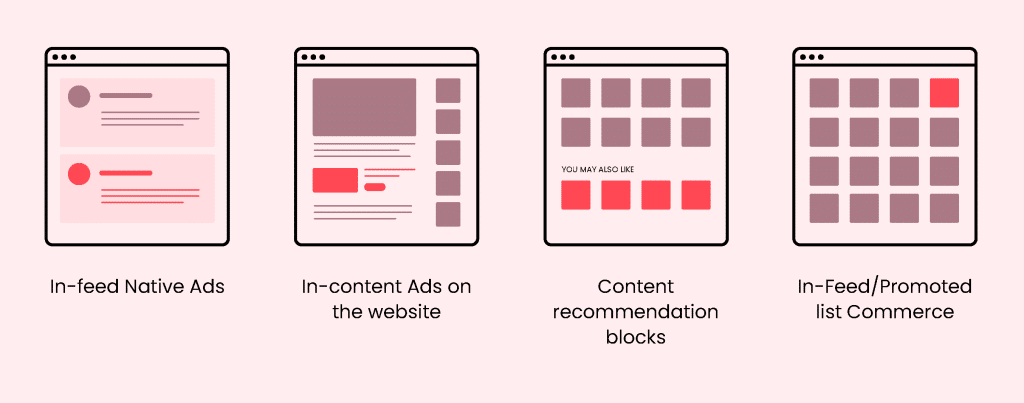
Image Source: AdPushup
Here’s what else you need to know about native advertising:
Relevant Content
If you’re reading an article about office productivity, a native ad might introduce you to a new project management tool. It’s content that aligns with your interests, making it more engaging.
Integrated, Not Intrusive
Native ads fit smoothly within the platform they’re on. Whether you’re scrolling through a news feed or reading an article, these ads appear in a way that doesn’t interrupt your experience. They’re there, but they don’t shout for attention.
According to a recent study, native ads are considered to be the least intrusive type of advertising.
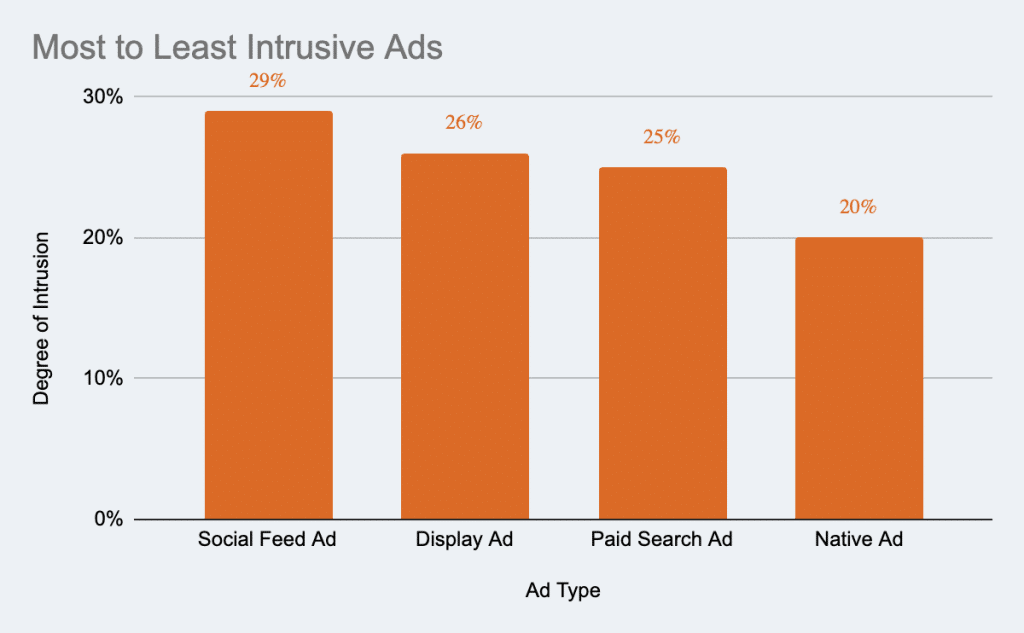
Image Source: MeetAnshi
Subtle Promotion
Native ads don’t feel like traditional advertisements. Instead of a hard sell, they offer valuable information or insights related to what you’re already consuming. It’s a softer approach, but it can be just as effective.
Clear Labeling
While native ads blend in, they’re not trying to deceive you. You’ll often find labels like “sponsored” or “promoted” accompanying them. It’s a way of maintaining transparency while offering content that adds value.
Diverse Platforms
Native advertising isn’t limited to one platform. From social media feeds to news websites, you’ll find these ads everywhere. Platforms like Outbrain or Taboola specialize in distributing native ads, ensuring they reach the right audience.
What Is Content Marketing?
Video Source: DigitalMarketer
Content marketing is the art and science of creating and sharing valuable content to attract and engage a target audience. Instead of pushing your products or services directly, you’re creating and sharing content like:
- Blog posts
- Ebooks
- Podcasts
- Case studies
- Videos
This makes your audience more informed and more likely to engage with your brand.
Here’s what sets content marketing apart:
Value-Driven Approach
At the heart of content marketing is the idea of offering value. Whether it’s a how-to guide, a webinar, or an insightful article, you’re giving your audience something they can use, learn from, or be entertained by.
Builds Trust and Authority
By consistently delivering high quality content, you position your business as an expert and thought leader in your field. Over time, this builds trust. When your audience thinks of a topic related to your industry, you want them to think of you first.
Long-Term Strategy
Content marketing generates 3x as many leads as traditional outbound marketing, but costs 62% less. But to achieve these kinds of benefits, you need to remember: Content marketing is a marathon, not a sprint.
It requires you to nurture relationships over time. As you consistently provide value, you’ll find that your audience grows, and their loyalty deepens.
Diverse Content Types
Content marketing is a lot more than just blog posts. It encompasses a wide range of formats, from videos and podcasts to infographics and Ebooks. This diversity allows you to reach different segments of your audience in the ways they prefer.
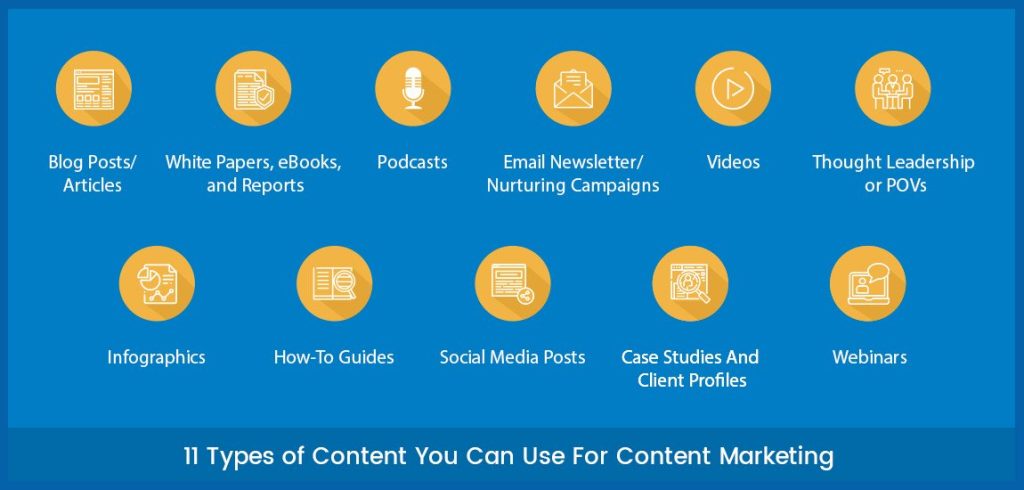
Image Source: E2M Solutions
Owned Media
One of the beauties of content marketing is that you own the content. Whether it’s on your blog, your YouTube channel, or your newsletter, you have control. You’re not renting space, but rather building assets that can continue to engage audiences over time.
Content Marketing vs. Native Advertising: What’s Better?
Content Marketing, of course!
Fractl and Moz analyzed survey responses from over 30 content marketing agencies and cost data from more than 600 digital publishers, and they found that content marketing has a better overall ROI compared to native advertising.
How Is Native Advertising Different From Content Marketing?
While both can aim to increase brand awareness, the goals of content marketing vs. native advertising are very different.
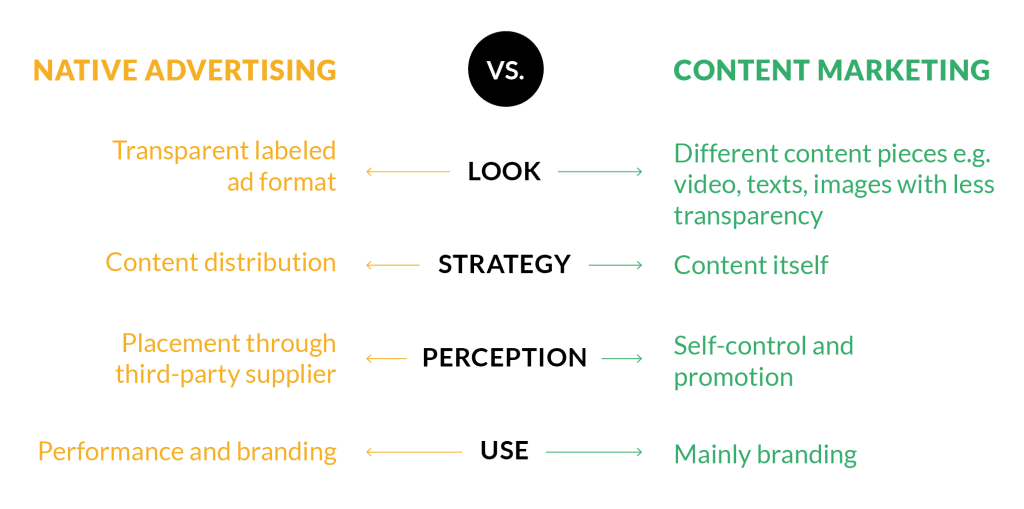
Image Source: Plista Blog
Content marketing intends to reach, engage and convert through inbound search, social and direct traffic.
According to the survey, native advertising aims to increase social engagement. These differences are reflected in the KPIs for content marketing and native advertising.
The top metrics measured for content marketing are number of leads, high-quality links and total social shares. Native advertising, on the other hand, looks at engagement metrics and impressions like campaign views, social engagement and site traffic.
Native ads are ads. And survey respondents confirmed this.
What Makes Content Marketing More Effective?
Kelsey Libert, Partner and VP of Marketing at Fractl, says that the ‘pay-to-play’ nature of native advertising means that native ads have to be branded, and this can be a major turn-off for social media audiences and results in lower editorial syndication.
Readers are less engaged with advertising content when compared to editorial content, and metrics show that advertising content on average has lower:
- Social shares
- Engagement rates
- View counts
Libert points out several other weaknesses with native advertising on social media, including its lack of SEO benefits, high cost to scale and limited reach due to paid partnerships. Content marketing, on the other hand, “lives and dies by its merit.”
Content marketing is created based on the needs and interests of the consumers, and when done correctly it has real value for the audience it is created for. Successful content marketing earns reach and social engagement based on the quality of content, which is something very few native ads accomplish.
That’s why content marketing also enjoys other benefits like increased organic rankings and optimization for conversions.
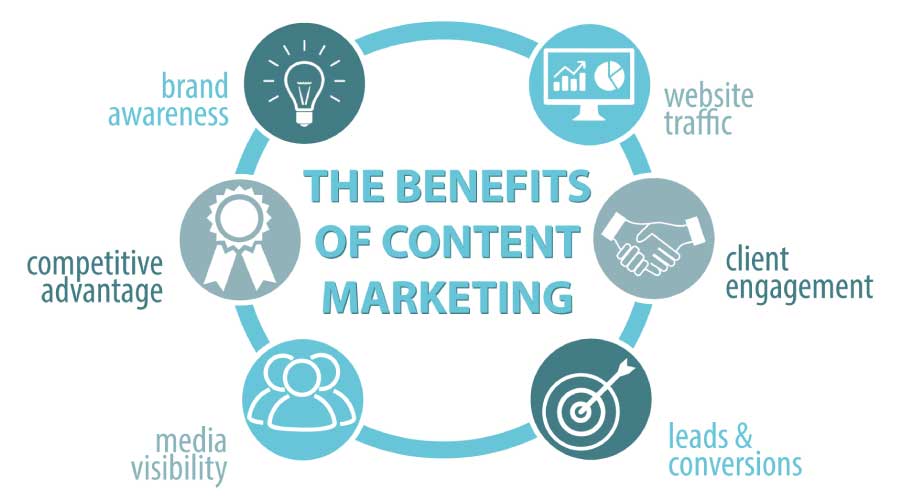
Image Source: Neel Networks
To be fair, this is not to say that content marketing is without weaknesses. One of the biggest challenges content marketing faces is in securing the commitment of the brand in a long-term investment that also requires some patience to see that investment pay off.
With the new FTC guidelines, it is becoming more challenging for brands to create share-worthy native ad content. Content marketing ultimately has a higher overall ROI and greater impact on marketing KPIs compared to native advertising.
How Can They Work Together?
Now, this doesn’t mean you have to kick native advertising to the curb! Coupled together, native advertising and content marketing pack a strong one-two punch.
We mentioned a few of the downsides of native ads, like coming off as less appealing and trustworthy to viewers. This is where content marketing picks up the slack. Rather than creating traditional native ads that are branded promotionals, use the content you’ve already crafted for your blog.
For example, Zemanta is a programmatic ad platform that does just that. Zemanta gives you the tools to place your blog content in-line with other relevant content across 95% of worldwide publishers.
Say you sell fire pits. Using Zemanta, you can get your “How to choose the right fire pit for your backyard” article in line with the latest Home and Gardens “Backyard fire pit ideas.” This retargeting gets your content in front of viewers who are already interested in your product.
Valuable Content Is Still King
Content marketing vs. native advertising? The answer is obvious.
Impactful marketing means delivering genuine value to your customers. By centering your content around helpful insights and tangible benefits, you pave the way to connect, captivate, and convert your audience.
Remember, content marketing isn’t a fleeting campaign or a native ad. It’s a dedicated journey to creating meaningful content. When you consistently produce top-notch content and fine-tune for engagement and conversions, you’re bound to reap the benefits.
Are you ready to create high quality content? Check out our SEO Blog Writing Service or schedule a quick consultation to learn more about how Marketing Insider Group can help you earn more traffic and leads for your business.


0 Commentaires